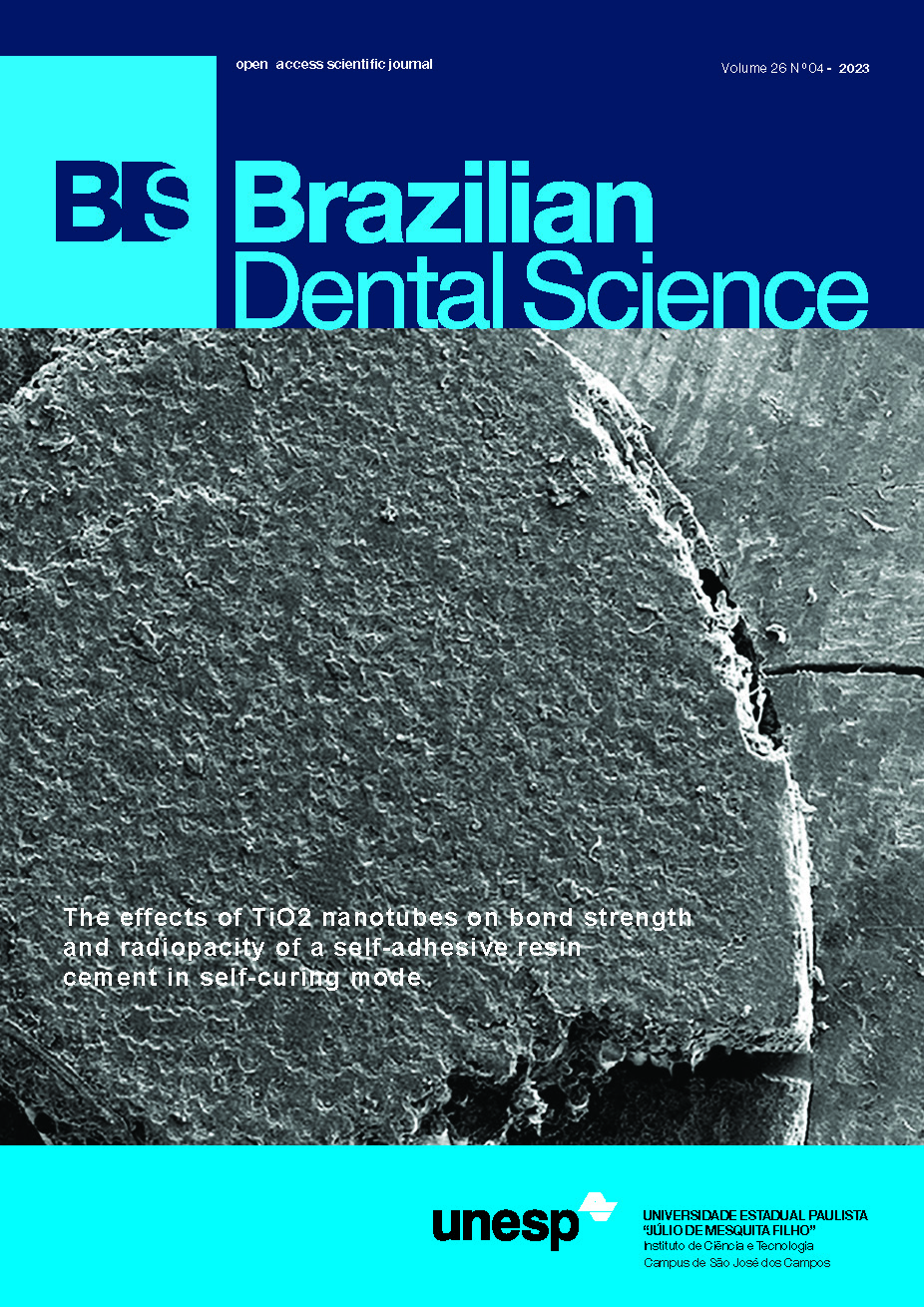Evaluation of short- and long-term bond strength of zirconia after different surface treatments
DOI:
https://doi.org/10.4322/bds.2023.e4001Abstract
Objective: The aim of the study was to evaluate the short and long-term effects of different surface treatments on the bond strengths of zirconia. Material and Methods: 225 blocks of sintered zirconia samples (4 x 4 x 3 mm) were divided into five groups and subjected to different surface treatments: control group (without surface treatment), alumina group (sandblasting [25- micro m-aluminum-oxide]), alumina+Ambar Universal-APS (AU) group, CoJet group (silica-coated [30-micro m silica-modified aluminum particles]), and CoJet+AU group. Subsequently, zirconia samples were cemented against resin samples (total dimensions: 8x8x6mm) and assigned to three storage conditions: dry, humid (artificial saliva at 37°C for 30-days) or thermocycling [100.000-cycles] (n=15 per group). The microtensile bond strength (micro TBS) was determined using a universal testing machine. The failure modes were observed and analyzed using a stereomicroscope. Normality tests, descriptive statistics, and two-way ANOVA, followed by post-hoc comparisons, were performed to evaluate the effect of surface treatments and storage conditions on micro TBS (alpha=0.05). Results: micro TBS was influenced by surface treatment in the short and long-term (P<0.0001). The highest values were found in CoJet+AU in dry (33.51 ±2.48 MPa), humid (32.87 ± 2.68 MPa) and thermocycling (21.37 ±1.68 MPa) storage conditions compared with others. Interestingly, no significant differences in micro TBS were found among alum +AU and CoJet alone under any of the three storage conditions. Adhesive failure increased in all groups after thermocycling, but CoJet+AU had the lowest values of adhesive failure compared with others. Conclusion: The combination of CoJet and Ambar universal as a surface treatment for zirconia specimens provides significantly higher short and long-term bond strengths of adhesive cementation.
KEYWORDS
Adhesives; CoJet; MDP; Sandblasting; Zirconia.
Downloads
Published
How to Cite
Issue
Section
License
Brazilian Dental Science uses the Creative Commons (CC-BY 4.0) license, thus preserving the integrity of articles in an open access environment. The journal allows the author to retain publishing rights without restrictions.
=================




























